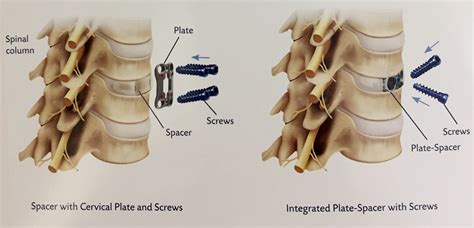The cervical spine, comprising the seven vertebrae in the neck, plays a crucial role in supporting the head and facilitating a wide range of motion. However, various conditions such as degenerative disc disease, spinal stenosis, and traumatic injuries can compromise the integrity of the cervical spine, leading to pain, instability, and neurological symptoms. In such cases, cervical spine fusion, a surgical procedure aimed at stabilizing and merging two or more vertebrae, becomes a viable treatment option. This article delves into the intricacies of cervical spine fusion, exploring its indications, surgical techniques, potential complications, and the recovery process.
Understanding the Need for Cervical Spine Fusion
Before undergoing cervical spine fusion, it’s essential to understand the underlying reasons that necessitate this surgical intervention. Conditions such as herniated discs, spinal fractures, and spinal deformities can cause the cervical spine to become unstable, leading to discomfort, limited mobility, and, in severe cases, neurological deficits. When conservative treatments fail to alleviate symptoms, surgical options, including cervical spine fusion, are considered.
Surgical Techniques in Cervical Spine Fusion
Cervical spine fusion can be performed using various surgical techniques, each with its indications and advantages. The choice of technique depends on the specific condition being treated, the location of the problematic vertebrae, and the surgeon’s preference.
- Anterior Cervical Discectomy and Fusion (ACDF): This is one of the most common approaches, where the surgeon accesses the cervical spine through an incision in the front of the neck. The diseased disc is removed, and a graft is placed between the vertebrae to facilitate fusion.
- Posterior Cervical Fusion: In this approach, the surgery is performed through an incision in the back of the neck. This method is often used for conditions that affect multiple levels of the spine or when additional stability is required.
- Minimally Invasive Cervical Spine Fusion: This technique involves smaller incisions and specialized instruments to minimize tissue damage and promote faster recovery. It’s an option for selected patients, depending on the nature of their condition.
The Fusion Process and Instrumentation
The fusion process in cervical spine surgery involves several key steps, including the preparation of the vertebrae, the placement of a bone graft, and the use of instrumentation (such as plates, screws, and rods) to stabilize the spine while the fusion occurs. The bone graft, which can be taken from the patient’s own body (autograft) or from a donor (allograft), serves as a bridge between the vertebrae, promoting the growth of new bone tissue and eventual fusion.
Potential Complications and Risks
Like any surgical procedure, cervical spine fusion carries potential risks and complications. These may include infection, adverse reactions to anesthesia, nerve damage, and issues related to the bone graft, such as graft rejection or failure of fusion (pseudoarthrosis). Additionally, patients may experience temporary difficulties with swallowing (dysphagia) due to the surgical approach through the front of the neck.
Recovery and Rehabilitation
The recovery process after cervical spine fusion is crucial for a successful outcome. Patients typically spend a short period in the hospital for initial recovery and are then discharged with specific instructions for post-operative care. This may include wearing a cervical collar to support the neck, limiting physical activity, and following a regimen of pain management. As the fusion progresses, which can take several months, patients gradually increase their activities under the guidance of their healthcare provider.
FAQ Section
What are the primary indications for cervical spine fusion?
+Cervical spine fusion is primarily indicated for conditions such as degenerative disc disease, spinal stenosis, herniated discs, and fractures that lead to spinal instability and significant neurological symptoms.
What are the potential risks associated with cervical spine fusion?
+Potential risks include infection, nerve damage, issues related to the bone graft, and difficulties with swallowing. However, the likelihood of these complications can be minimized with proper surgical technique and post-operative care.
How long does it take to recover from cervical spine fusion surgery?
+The recovery time can vary significantly among individuals, but most patients can return to their normal activities within 2-3 months after surgery. Full fusion of the vertebrae can take 3-6 months or even up to a year in some cases.
Conclusion
Cervical spine fusion is a complex surgical procedure that offers relief and stability to individuals suffering from severe cervical spine conditions. While it carries potential risks, advancements in surgical techniques and post-operative care have significantly improved outcomes for patients. By understanding the indications, techniques, and recovery process involved in cervical spine fusion, individuals can make informed decisions about their treatment options and work closely with their healthcare providers to achieve the best possible results.



